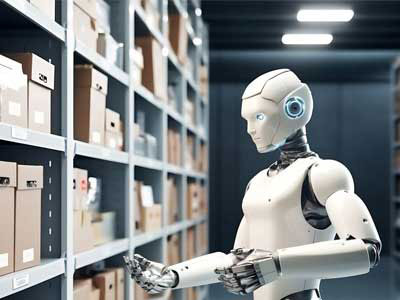Key Takeaway
Robots can replace humans in some tasks, especially repetitive or dangerous jobs. They excel in manufacturing, where precision and speed are crucial. However, robots lack creativity, empathy, and complex decision-making skills. Human intelligence and emotional understanding are irreplaceable. Robots and AI can assist humans but not fully replace them. Industries benefit from the collaboration between human expertise and robotic efficiency. While robots enhance productivity, they can’t replicate human creativity and problem-solving abilities. So, robots can complement human work but not completely take over.
Areas Where Robots Excel
Robots excel in various industrial applications, enhancing efficiency and precision across manufacturing lines. From repetitive assembly tasks to hazardous environment operations, robots offer consistent performance, reducing errors and ensuring workplace safety. They’re pivotal in automating processes like welding, packaging, and quality control, where accuracy and speed are crucial. In sectors such as automotive, electronics, and pharmaceuticals, robots streamline production, handle delicate materials, and operate in conditions unsuitable for humans. Their versatility and reliability make them indispensable in modern industrial settings.

Human-Robot Collaboration
In modern industrial settings, the synergy between humans and robots is revolutionizing production. Robots excel in handling repetitive and physically demanding tasks, freeing humans to focus on complex and creative aspects of manufacturing. For instance, in the automotive industry, robots efficiently perform welding and painting, while humans manage quality control and design modifications. This collaboration not only boosts efficiency but also drives innovation. By leveraging the strengths of both, industries can achieve unprecedented levels of productivity. Additionally, robots equipped with AI provide valuable data-driven insights, aiding humans in making informed decisions that optimize operational strategies.
However, the true power of human-robot collaboration lies in its ability to enhance human capabilities. Robots handle monotonous tasks, reducing human error and fatigue, which leads to higher quality outputs. Moreover, the collaboration fosters a safer work environment, as robots take on hazardous tasks. By working together, humans and robots can tackle challenges more effectively, driving continuous improvement and innovation in industrial applications. This partnership ensures that production processes remain agile and adaptable to changing demands, ultimately benefiting the entire industry.
Limitations of Robots
Despite their advantages, robots have notable limitations. They lack the ability to think creatively and adapt to unforeseen circumstances, a critical aspect where humans excel. In manufacturing, for instance, a robot encountering an unexpected problem might halt production, waiting for human intervention. This dependency on pre-programming makes robots less flexible in dynamic environments. Additionally, the significant initial investment and ongoing maintenance costs can be prohibitive for some businesses, limiting widespread adoption. While robots are efficient in repetitive tasks, they cannot replicate human empathy, judgment, or nuanced understanding needed in customer service or complex decision-making roles.
Moreover, robots are not infallible and can suffer from technical malfunctions that disrupt operations. The absence of emotional intelligence in robots means they cannot build relationships or manage team dynamics effectively. These limitations highlight the importance of human involvement in areas requiring adaptability, critical thinking, and interpersonal skills. While robots can significantly enhance productivity, they are best utilized in conjunction with human oversight to ensure smooth and efficient operations. Understanding these limitations is crucial for industries to balance robotic automation with human expertise.
Skills and Roles for Humans
In the age of robotics, human skills are rapidly evolving to complement technological advancements. Technical skills such as programming and robot maintenance are becoming increasingly valuable. However, soft skills like creativity, problem-solving, and emotional intelligence remain irreplaceable. For example, while robots can process and analyze vast amounts of data, humans are needed to interpret the results and make strategic decisions based on context. Roles that require human interaction, such as team leadership and customer relations, continue to be essential, as they involve empathy and nuanced understanding that robots cannot provide.
Additionally, humans play a crucial role in designing and improving robotic systems to meet the evolving needs of various industries. This requires a combination of technical knowledge and innovative thinking. By developing both technical and interpersonal skills, humans can effectively collaborate with robots, leading to more innovative and efficient industrial applications. The ability to adapt and learn new skills will be vital in ensuring that humans remain an integral part of the workforce in a robotics-driven future.
Future of Work
The future of work will be defined by a seamless integration of humans and robots. As robots take over repetitive and hazardous tasks, humans will transition into roles that require critical thinking, creativity, and interpersonal skills. This shift is expected to create new job opportunities and industries focused on developing and maintaining robotic systems. Education and training programs will need to adapt accordingly, emphasizing both technical and soft skills to prepare the workforce for this new landscape. Ethical considerations, such as job displacement and data privacy, will also become increasingly important in shaping the future workplace.
In this collaborative environment, humans and robots will work together to leverage their respective strengths, driving innovation and productivity. The emphasis will be on creating a balanced workforce where robots enhance human capabilities rather than replace them. By fostering a culture of continuous learning and adaptation, industries can ensure that both humans and robots contribute to sustainable growth and success. This vision of the future underscores the importance of human ingenuity and the need for a dynamic and flexible approach to work in the age of robotics.
Conclusion
In comparing human and robot capabilities, it’s evident that each excels in distinct areas. Humans bring creativity, emotional intelligence, and nuanced decision-making to the table, essential in complex scenarios. Robots, however, offer precision, endurance, and consistency in repetitive tasks. The synergy between human ingenuity and robotic efficiency promises to redefine industries, leveraging the strengths of both for optimal outcomes in diverse applications.
